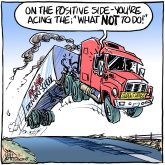IT IS the nature of government and the political process that today’s policy decisions may take years to germinate and bear fruit.
Only now, four years later, are many of the economic and political ramifications of the abolition of the Crow Benefit becoming clear. More will surface.
In ways not imagined, the 1982 adoption of the Canadian Charter of Rights continues to transform Canadian society.
So it is with the 1995 federal decision to change the way the government funds and influences agricultural research.
Then-agriculture minister Ralph Goodale coped with severe 1995 budget cuts by announcing Ottawa would keep money flowing to agricultural research by luring private sector dollars.
Read Also

Higher farmland taxes for investors could solve two problems
The highest education and health care land tax would be for landlords, including investment companies, with no family ties to the land.
Fewer federal dollars, but more private investment, would mean a net gain for research. The Matching Investment Initiative was born, offering up to $35 million in funds to match private investment.
Goodale’s MII, embraced by successor Lyle Vanclief, has been praised for luring private funds into a traditionally underfunded sector.
But other, less praise-worthy results have started to become evident.
Public funding has been cut. The balance of research power has shifted to private investors, often companies or producer groups with specific and short-term research goals.
It has forced scientists to become fund raisers, spending one-third of their time or more these days trying to raise money for future work, instead of doing what they do best – creating new knowledge.
It often changes the nature of work they can do. It is easier to get funds for short-term projects that can quickly create a product to be marketed.
Basic research is a harder sell.
Last week on Parliament Hill, a bevy of agriculture and veterinary college deans reinforced the view that there are serious and long-term consequences of that 1995 policy decision.
A cut in federal funding has meant equipment in labs is wearing out and is not being replaced.
It is difficult to keep promising students or accomplished teachers and scientists in Canada because of the lure of higher salaries and more research funding in the United States.
The inevitable result in a science and knowledge-based industry like agriculture is that the sector will fall behind other countries. Future commercial breakthroughs build on the findings of scientists wondering “why” rather than industry-pressured researchers wondering “how quickly?”
Twenty or 30 years from now when Canadian scientists must largely depend on the findings of foreign research, it will be clear the 1995 government research cuts were the beginning of a subservient Canadian agriculture research community, unwilling to finance its own fundamental building- block research and unable to keep its best and brightest here.
Last week’s warning should give our political leaders pause.
Recent history suggests they will ignore it, continue to proclaim their love of research and to insist one dollar of public investment has the same long-term public benefit as one dollar of public investment.
Don’t believe them.














